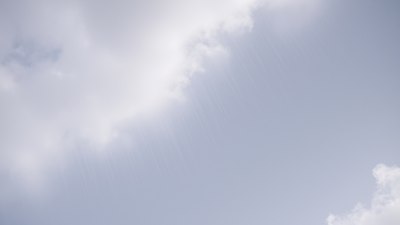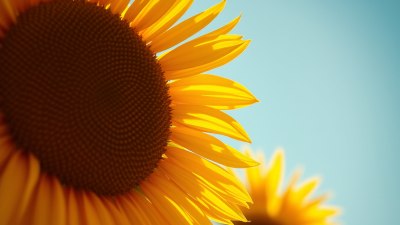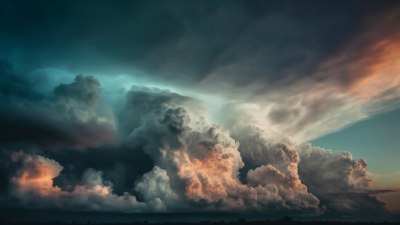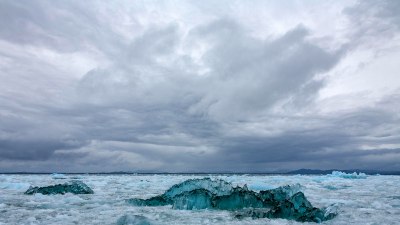What Makes Snow Wet or Powdery
Explore the science behind what causes snow to be wet or powdery, including temperature, humidity, and environmental factors.
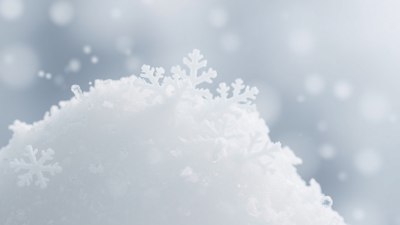
Image created with Flux Schnell
Snow, a common phenomenon in many parts of the world, can take on various forms when it falls from the sky. Among the most familiar types are wet snow and powdery snow. Understanding why snow behaves differently—sometimes clumping together in wet masses and other times falling as fine, powdery flakes—requires a dive into the physics and meteorology behind snow formation. This article explores what determines the texture and moisture content of snow and why these differences matter to everything from winter sports to building maintenance.
What Is Snow Made Of?
At its core, snow is ice crystals that have formed in the atmosphere. Water vapor in clouds freezes around particles such as dust or pollen, forming snowflakes. These snowflakes are hexagonal crystals with intricate patterns and shapes. The shape and size of a snowflake depend on temperature and humidity conditions in the upper atmosphere where the snow forms.
Snowflakes are mostly made of frozen water but can vary widely in size and structure. When snow falls, how it interacts with the air and ground largely determines whether it is wet or powdery upon landing. Weather conditions during and after its fall play a crucial role, influencing the snow's moisture content and texture.
The Role of Temperature
Temperature is the primary factor affecting whether snow will be wet or powdery. When snow falls through cold, dry air, it usually remains powdery. In contrast, when the temperature is closer to the freezing point of water (0°C or 32°F), the snow tends to be wetter.
Cold air holds less moisture than warm air. As snowflakes fall through colder temperatures, their surface remains frozen solid, and they do not absorb additional moisture. This results in light, fluffy powder snow—a favorite among skiers and snowboarders. Powder snow is low in liquid water content, often less than 2-3% by weight.
When temperatures hover around freezing, snowflakes can partially melt or become coated with thin layers of liquid water. This causes the flakes to stick together upon hitting the ground or when compressed, creating wet snow with a higher liquid water content—sometimes up to 8-10% or more. Wet snow is heavier and denser than powder snow, which makes it ideal for building snowmen or packing into snowballs.
Humidity and Dew Point Influence
Humidity and dew point temperatures significantly impact the formation of wet versus powdery snow. Dew point is the temperature at which air becomes saturated, and water vapor begins to condense. When the air temperature is close to or above the dew point during snowfall, snowflakes can pick up moisture as they descend, increasing the snow's wetness.
High humidity levels imply more water vapor present in the atmosphere, which may contribute to the partial melting of snowflakes or the accumulation of supercooled water droplets on their surfaces. This phenomenon increases the likelihood that snow will be wet and sticky.
On the other hand, low humidity with cold air creates conditions for dry snowflakes that retain their powdery texture. Dry air also reduces the chance of melting, so snow remains loose and fluffy, not compacting easily.
Snow Crystal Structure and Growth Patterns
The microscopic structure of snow crystals also determines whether the snowpack feels powdery or wet. Powdery snow often consists of pristine, well-formed crystals with sharp edges and minimal melting or sintering. These snowflakes have many air pockets between them, which reduces their density and enhances their fluffy character.
Wet snow crystals are typically rounded or partially fused because melting and refreezing processes smooth their edges. Melted snowflakes bond together more tightly, eliminating air pockets and creating a denser, heavier snowpack with increased cohesiveness.
Snow crystal habits change depending on temperature and supersaturation during their formation. Dendritic crystals with branched arms form in cold, humid conditions and yield light powdery snow. Columnar or plate-like crystals are more common in different temperature ranges and may not form as fluffy a snow layer.
The Influence of Sunlight and Ground Temperature
After snow falls, sunlight and the temperature of the ground can significantly alter its condition. Sun rays warm the snow's top layer, causing partial melting during the day, especially on sunny days near the freezing point. This meltwater right on top contributes to wet snow conditions.
Conversely, a cold ground helps preserve snow’s powdery nature by limiting melting from below. At night, refreezing occurs if temperatures drop, forming a harder crust atop softer layers of snow.
Repeated thawing and freezing cycles create complex snowpack layers, some icy and some powdery. A snowpack that is initially powdery can become wet if rain falls on it or temperatures elevate for sustained periods.
The Effect of Wind on Snow Texture
Wind redistributes snow after it falls, which influences whether the snow appears powdery or wet. Strong winds can break apart delicate snow crystals and compact them into denser, icy layers. Wind blowing over cold powder snow can cause sublimation—the direct transition from ice to vapor—making the surface drier.
On the other hand, if snow falls in calm wind conditions on cold ground, it tends to remain light and powdery. High winds combined with melting conditions may contribute to wet, dense snowpacks, especially when wind speeds are high enough to cause snow to pile in certain areas (wind slabs).
Snow Type and Its Impact on Activities
The difference between wet and powdery snow has practical implications for outdoor activities and industries. Powder snow is prized by winter sports enthusiasts for its softness and cushioning effect, making activities like skiing, snowboarding, and snowshoeing more enjoyable. The lower density and fluffiness provide better traction and less resistance.
Wet snow, however, is heavier and sticks together, which can be better suited for activities like building snowmen, snowball fights, or for snowplowing and removal, as it compacts well. But wet snow can also be hazardous—it weighs more on trees and roofs, increasing the chance of breakage or collapse under the load.
Avalanche risk also varies with snow type. Wet snowpacks can become unstable when meltwater infiltrates the snow layers, increasing their weight and lubrication, which may trigger avalanches. Dry powdery snowpacks are prone to different types of avalanches, often triggered by new snowfall or wind slabs.
Human and Environmental Factors Affecting Snow Conditions
Pollution, urban heat, and changes in land use can influence local snow conditions, sometimes causing wet snow to appear where powder snow would naturally fall. Pollution particulates act as nuclei for snowflake formation but can also affect melting behavior.
Urban areas tend to have higher temperatures due to the heat island effect, causing snow to melt faster and become wetter than in outlying rural areas. Vegetation and ground cover can insulate snow against melting or promote faster melt, changing snow moisture content locally.
The texture and moisture content of snow—whether it is wet or powdery—are controlled primarily by temperature, humidity, and environmental interactions during and after snowfall. Cold, dry conditions favor the formation of light, fluffy powder snow with low liquid content, while warmer temperatures near freezing and higher humidity create wet snow that sticks and compacts easily.
Understanding these factors helps meteorologists predict snow conditions and assists outdoor enthusiasts and professionals in adapting to varying snow types. The interplay of atmospheric physics, ground conditions, and human activity creates a dynamic range of snow textures that define winter landscapes around the world.




